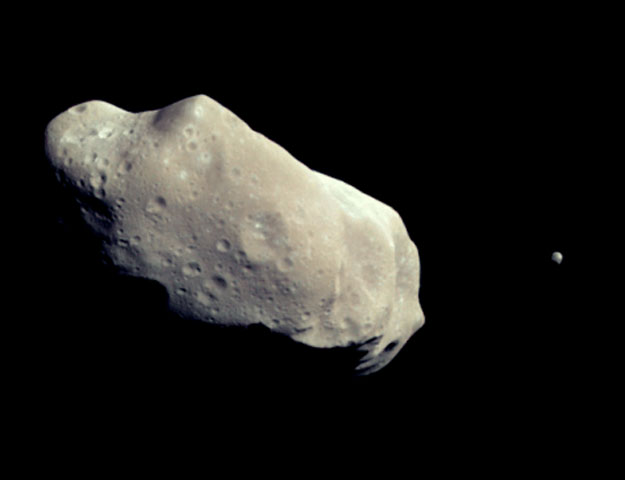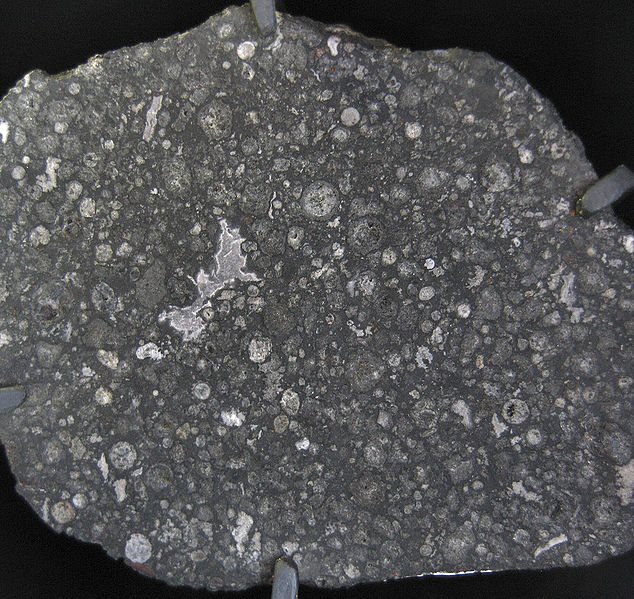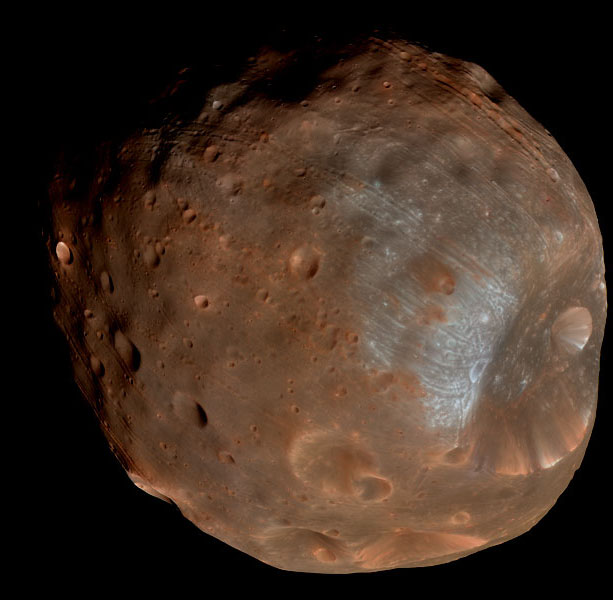Additional reading from www.astronomynotes.com
If we take a complete inventory of the entire contents of the Solar System, we find that there are many small, rocky bodies ranging in size from similar to grains of sand up to the size of small moons or comets. The smallest rocky objects that are found in space are referred to as meteoroids. There are three different classifications of meteoroids, depending on how they are observed:
- Meteoroid: A chunk of rock orbiting the Sun inside the Solar System.
- Meteor: When a meteoroid encounters the Earth's atmosphere, it interacts with the gases in the atmosphere and all or most of it gets vaporized. The streak of light that we see as the rock penetrates the atmosphere is called a meteor, which many people refer to as "a shooting star."
- Meteorite: If some of the material that makes up a meteoroid survives the trip through the atmosphere and is found on Earth, we refer to the remnant as a meteorite. If you want help identifying candidate meteorites you can see the following page:
There are many meteorites that have been recovered on Earth. We find that there are several types of meteorites that can be separated based on their composition. Some meteorites are almost entirely made up of iron and nickel. These chunks of metal are very easy to find when they land on the Earth because they are so dense and are essentially chunks of metal. There are also stone and stony-iron mix meteorites that land on the Earth (these are more common), but since they appear to the untrained eye more like the naturally occurring rocks on the Earth, without extensive testing they are more difficult to identify as meteorites. During its mission, the Mars Rover Opportunity discovered an iron meteorite on Mars. It just happened to be lying on the planet's surface right near where the Rover's heat shield landed after the spacecraft jettisoned it. This is an iron meteorite, making it stand out among the other rocks the Rover has studied intensively during its trip around the surface of Mars.
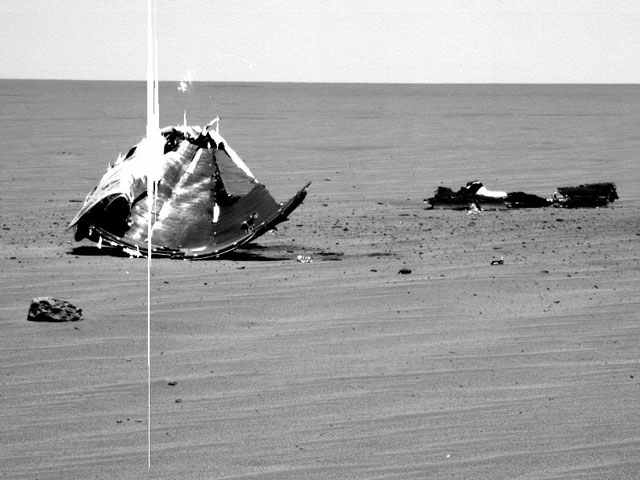
Some of the meteorites that have been found on the Earth have been able to be identified as having originated on the Moon or even Mars. These are very useful meteorites because they allow us to study the surfaces of the Moon and Mars without having to send a mission to these places and return samples. A number of years ago, several NASA scientists thought they found evidence of fossilized life forms in a Martian meteorite. This result remains controversial though, so it is not widely accepted any longer among astronomers. There has been another, more recent report about potential indications of life in a different Martian meteorite, but this too is considered unlikely to be correct.
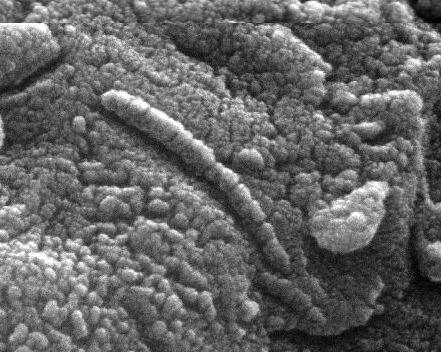
Although Moon and Mars rocks are occasionally found on Earth, the majority of the meteorites recovered on Earth appear to have been orbiting the Sun for billions of years prior to landing on the Earth. In fact, many of them, when dated, appear to be the same age as the Sun and the Earth—about 4.6 billion years old. Chondrules in meteorites (round mineral grains like the ones in the image of the Allende meteorite below) have been determined to have ages of more than 4.5 billion years, so the study of these grains allows astronomers to learn about the conditions in the early Solar System, when the planets (and these meteorites) were forming.
Because these meteorites appear to be as old as the Sun, they must have formed in the early days of the Solar System. Thus, astronomers think that their composition tells us about the conditions in the early Solar System when the planets were forming.
Want to learn more?
There are many resources out there on meteorites. In particular, there is a publication called "Meteorites and Their Properties." The Arizona State University Center for Meteorite Studies also has provided a page with educator resources about meteorites.
During the year, there are times when there are known “meteor showers” that are visible in our night sky. These usually occur every year, and there are times when the rate of visible meteors in the sky is much higher than average (perhaps up to 1,000 meteors per hour!). Clearly, what must be happening is that the Earth must be periodically passing through an area of space with a lot of small meteoroids. Astronomers have found that, in most cases, the times of meteor showers match well with the expected times that the Earth is passing through the known debris tail from a comet that passed by in the past. Since the tails of comets contain chunks of the nucleus the size of meteoroids, these objects all create visible meteors when the Earth collides with them. Thus, we know that the Earth is passing through the tails of comets frequently, and there is no harm done.
However, this does not mean that comets and meteors cannot harm the Earth. As mentioned above, if a comet's nucleus were to collide with the Earth, this would cause an immense amount of damage. The same would be true if a large enough meteorite were to impact the Earth's surface. Recall the image of Barringer Crater. Clearly, that impact must have been enormous to have excavated such a large area of Earth's crust.
The meteorite that created the Barringer crater was much larger than the average meteorite, but statistically, we expect that such impacts may occur every 10 million years or so. It has been suggested that an even larger impact that occurred about 65 million years ago was responsible for global changes that killed all of the dinosaurs. This theory has been strengthened with the discovery of the remnants of a crater (called the Chicxulub crater) about 200 kilometers across that is about 65 million years old.
Because large impacts on Earth have such potential for catastrophic events, astronomers have begun to systematically search for and catalogue all of the large “Near Earth Objects” (NEOs) that may impact the Earth. There have been several reports in the news of potential NEOs that may impact Earth, and even two Hollywood movies on the subject. At this time, though, no NEOs are on paths that are known to impact the Earth. However, to be safe, astronomers continue to study these objects in order to determine if we need to worry and to plan for what to do in case we do discover an NEO on a collision course with Earth.
Asteroids
The impactor that created the Chicxulub crater was not technically a meteoroid; it was too big. There is another class of object known as asteroids that are basically the same as meteoroids, just larger. Sometimes these objects are also called minor planets. There are several large asteroids—like Ceres, Pallas, and Vesta—which are about 900 km, 500 km, and 500 km in diameter, respectively. As the largest, Ceres is actually one of the handful of objects classified using the new dwarf planet designation. Most of the other known asteroids are smaller, in the range of 10 - 100 km or so.
The majority of asteroids are all found in a belt between the orbits of Mars and Jupiter. Although you have probably seen spaceships flying in “asteroid belts” in movies like Star Wars, the asteroid belt in our Solar System is not very densely packed. On average, the separation between the largest asteroids is very large (more than 1 million kilometers, or about 10,000 of their diameters), so NASA missions to the outer planets, such as Galileo and Cassini, easily passed safely through the asteroid belt.
Like comets, the planets can alter the orbits of asteroids. It looks like Mars, Jupiter, and Saturn may have captured asteroids as part of their systems of Moons. For example, the two Moons of Mars (Phobos and Deimos) are small, irregularly shaped objects that look much more like asteroids than the nearly spherical moons like Earth's Moon.
In fact, if you compare the image above of Phobos to the one below of Asteroid Ida, there are a number of similarities between these two objects.
